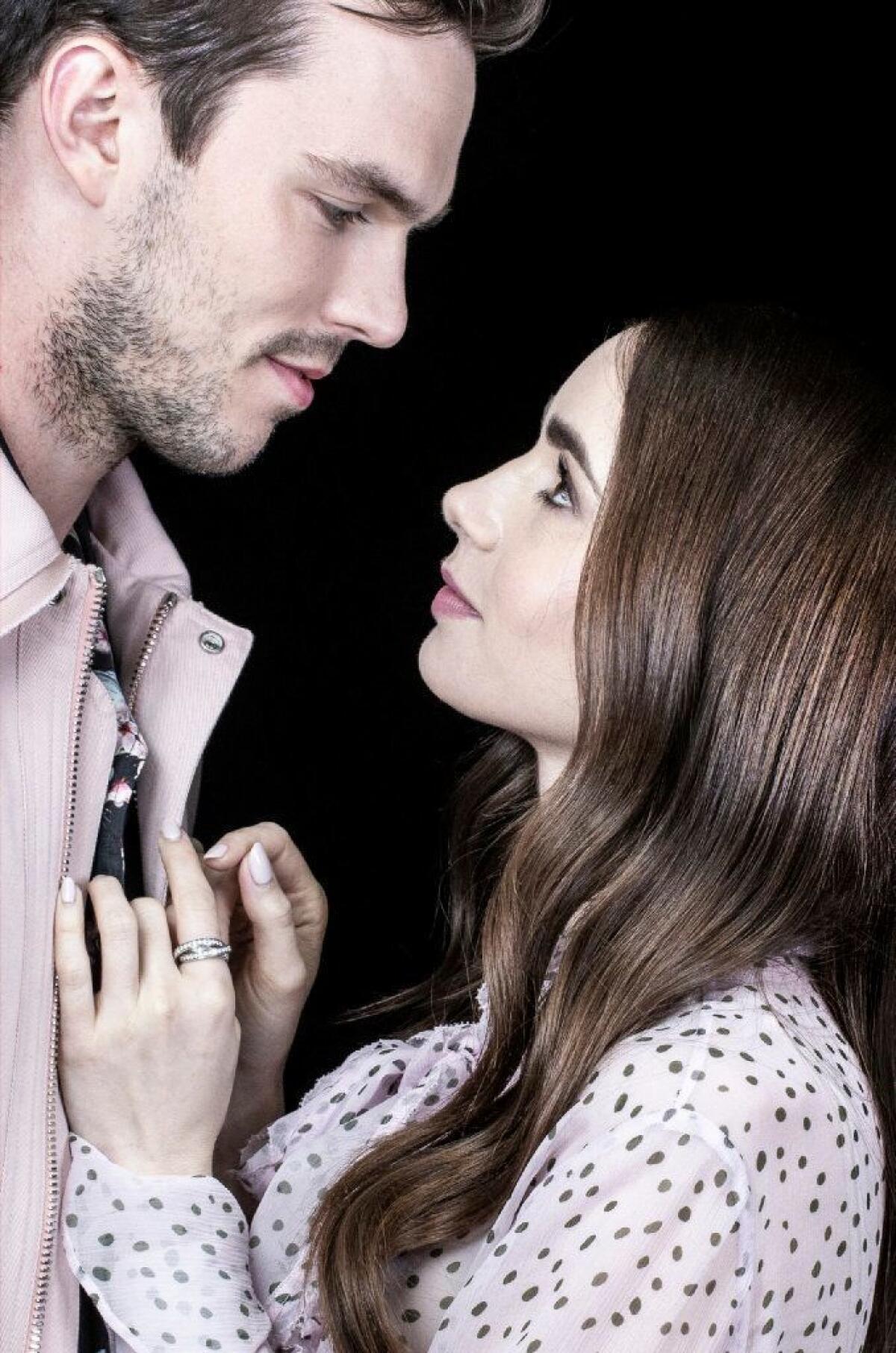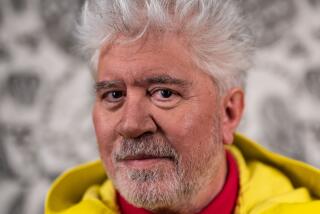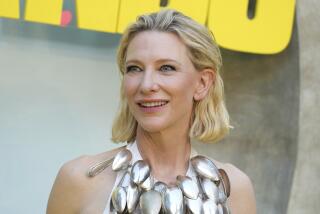Nicholas Hoult, Lily Collins and the love story that inspired J.R.R. Tolkien’s writing

The early years of J.R.R. Tolkien’s life play out very much like fiction in Dome Karukoski’s biopic of the famed author. So much so that Karukoski doesn’t really consider “Tolkien,” in theaters Friday, to be a biopic at all.
The film, which stars Nicholas Hoult as the “Lord of the Rings” author and Lily Collins as his wife, Edith Bratt, recounts Tolkien’s young life, from the loss of his parents to his school years to fighting in World War I. Much of that personal saga is unknown, even to super fans of Tolkien, a category in which Karukoski puts himself.
“I didn’t know anything about his younger life,” the director said during a recent press day in London. “When I started digging it was surprising. It was this fable of emotions he had experienced that are so readable in his own books. ... It’s a story about youth and love and friendship and exploring his mind. It’s quite stunning that this story hasn’t been told.”
Hoult, who also grew up reading the author’s works, looked for fine details and nuance in his research, pulling from books and video interviews Tolkien did later in life. His goal wasn’t to do an impression of Tolkien, but to try to get inside his head and capture his essence.
“Nowadays, even if you don’t know someone’s work you seem to know them, just through how much news is covered and through Twitter,” the actor reflected. “You seem to know a lot about a lot of people’s lives. And this is someone who I was a fan of and when I read the script I was like, ‘Wow, I didn’t know any of that.’ It was ... lovely to get to go back through his work and learn about what inspired him and the relationships that meant something to him.”
The actor prepared while shooting “X-Men: Dark Phoenix” and spent time between takes — in full costume and makeup as Beast — painting watercolors in Tolkien’s style.
He added, “You do all this research and then hopefully in the back of your mind, when you’re on set, it’s subconsciously there. Detail is where it all comes from.”

Collins had less to work with because Edith and her life aren’t well documented. A few photographs, including some of the couple together, do exist — the actress sensed a cheekiness to Edith, which she brought to the performance — and Collins was able to research what it would have been like for women during that period in general.
She also learned piano for the role, since it is known that Edith played very well. Ultimately, though, much of Collins’ performance is drawn from knowing that Edith inspired Tolkien to write the characters of Luthien and Arwen.
“With a real person I feel, even if they’re not alive anymore, a karmic responsibility to do them justice,” said Collins. “We don’t know much about her and this is a chance to tell a story of a woman of the period that wasn’t told before. I would want to feel represented in a way she would be proud of. But ... there was only so much I could do. The rest of it was based on me thinking about the characters she inspired and me loving magic and fantasy. I wanted to formulate a person who would have all these qualities and be inspiring.”
While the film is ultimately not about Tolkien’s writing (there are very few moments where the character actually sits down to put pen to paper), a key scene reveals Edith dancing in the English forest, an instance that apparently inspired the author to base those characters on his wife. To find the right free-spirited vibe, Collins convinced Karukoski to let her dance to an actual song: Florence and the Machine’s “Dog Days Are Over.”
“She is magic when you watch her,” Collins noted of Florence Welch. “That was the one person I thought made sense to be inspired by. I just went crazy dancing.”
“Tolkien” balances these magical, light-hearted moments with heavier ones, eventually leading the characters into World War I, where the author served as a communications officer. Tolkien and his group of close friends from school, which the film suggests inspired the fellowship in “Lord of the Rings,” all enlist, but only two of them come home.
To better understand the horrific impact of the war, Hoult listened to 25 hours of Dan Carlin’s “Hardcore History” podcast on the subject. Karukoski didn’t want to present a straight-forward depiction of the trenches, however. He intersperses the images of war and gunfire with hallucinations of the sorts of fantastical beasts that appear in Tolkien’s stories.
“He’s a genius in building worlds, so wouldn’t I want to see the inspiration for those worlds?” the director said. “Throughout the film he’s sketching his masterpiece — he sees a line over there and a line over there. It’s yet not the thing it will become. ... Watching an author create I wanted to avoid. It’s a story of growth, of how he became an artist.”
In order to tell this story well, Karukoski noted, it was necessary to make a few adjustments to the timeline and the events. For instance, the love story between Tolkien and Edith is somewhat simplified and compressed, and a few of the years are changed. But the director met with numerous researchers during the preparation for the film to ensure the scenes and characters resonate with authenticity.
“The film is very truthful in emotions,” he said. “We’ve taken artistic liberties. ... But the events are emotionally true. We were very, very accurate with the characters, but you have to find your interpretation of everything you discover about them.”
The Tolkien estate, which was not involved in the making of the film, recently released a statement that it does not “endorse [the film] or its content in any way.” Karukoski said he’s not bothered by the statement, especially since no one from the estate has actually seen the movie.
“I’ve approached them myself to arrange a screening,” he said. “I would love to sit with them and hear their thoughts and explain why some artistic licenses have been taken. The statement itself is not actually hostile — it’s more like they had to do it so that journalists wouldn’t call them. It was actually quite respectful. But I’ve given them the opportunity to watch the film with me and they haven’t responded yet. And I understand if that never happens.”
He added, “This film is done with huge respect. It’s not demonizing [Tolkien]. We can stand by the beauty of the story. We wanted to celebrate his life.”
The celebratory aspect is compelling to Hoult and Collins as well, who have both found a new respect for Tolkien’s life and work since making “Tolkien.”
“It’s really important to see this side of the story,” Collins noted. “To see what came before the actual stories. Maybe now people rereading the books or rewatching the movies will find little Easter eggs. Those unexpected beginnings are really fun to know about.”
“He changed literature and inspired so many things we love nowadays,” Hoult added. “It’s so ingrained in culture that it’s remarkable. I’d sit around trying to be as imaginative as him, which is impossible. You go around in circles trying to do that.”

More to Read
Only good movies
Get the Indie Focus newsletter, Mark Olsen's weekly guide to the world of cinema.
You may occasionally receive promotional content from the Los Angeles Times.










